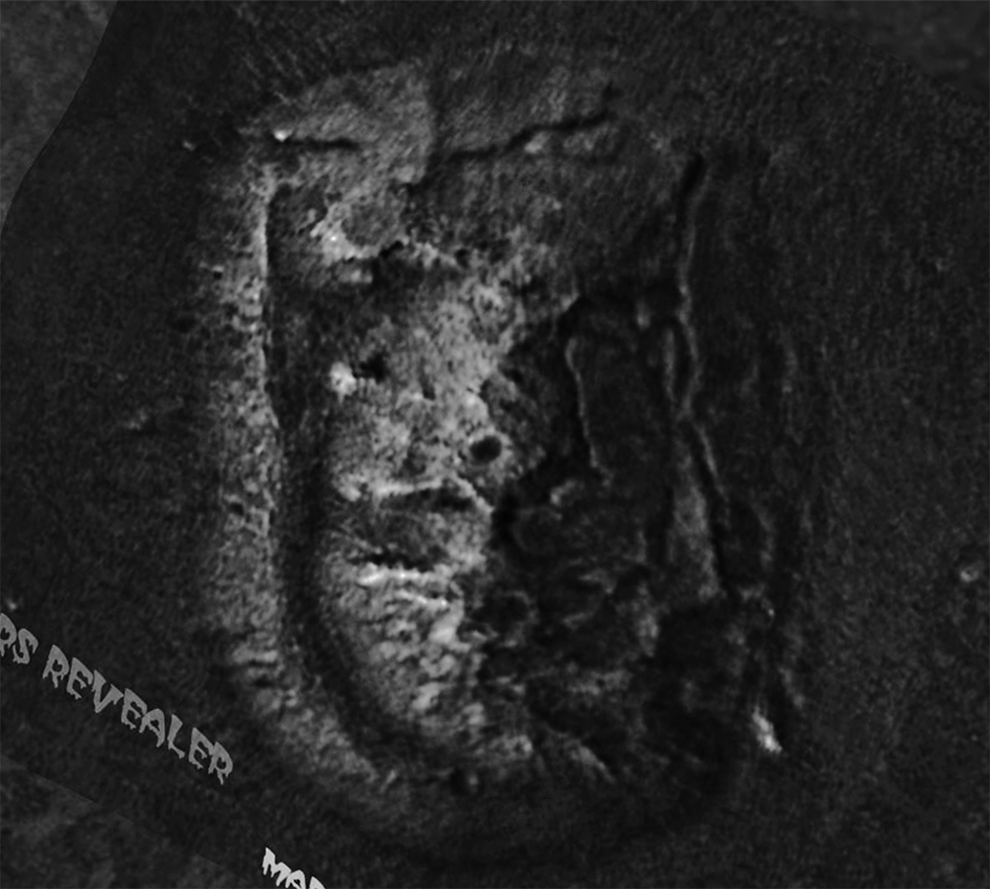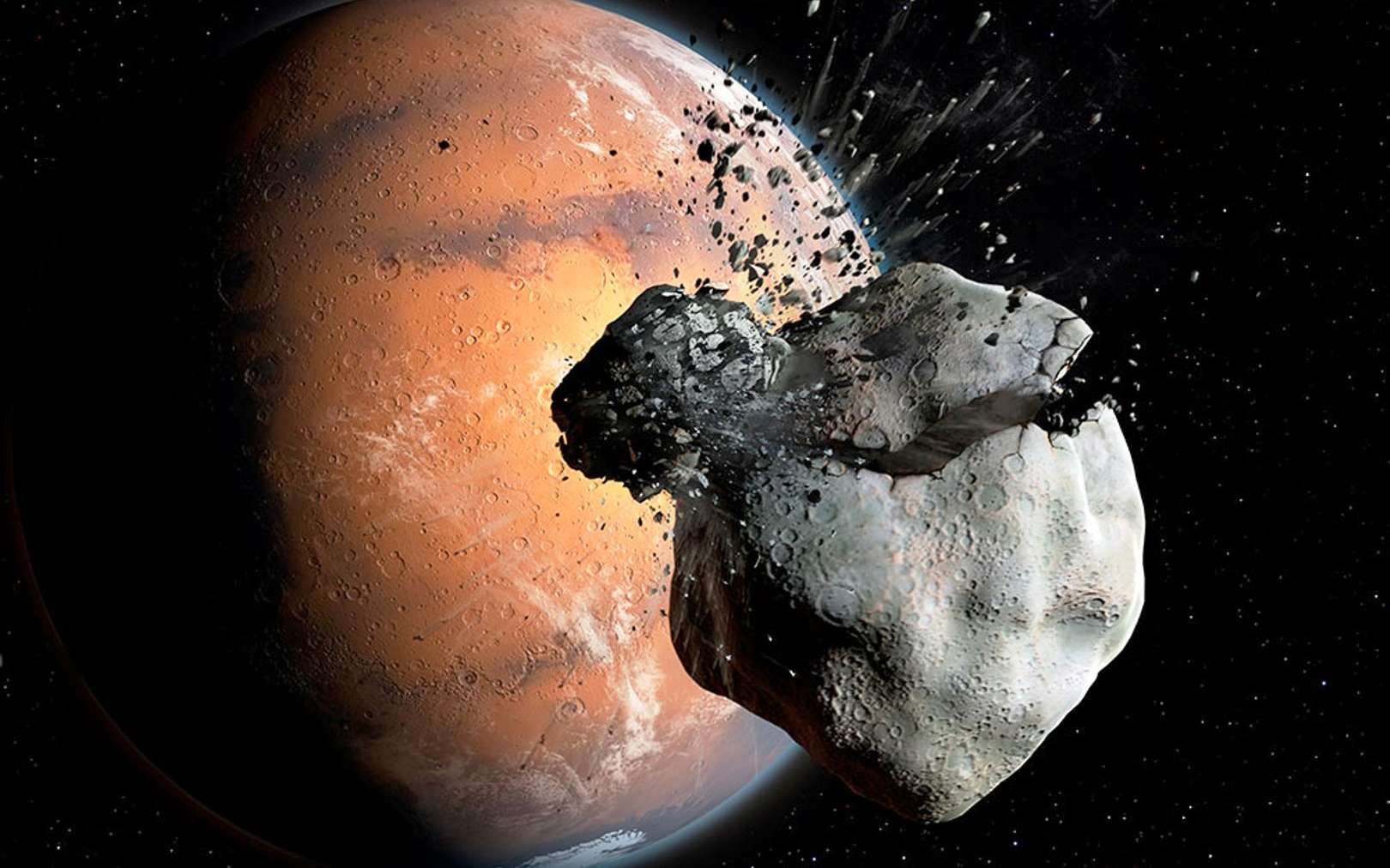

The Thermal Emission Spectrometer is operated by Arizona State University and was built by Raytheon Santa Barbara Remote Sensing. MSSS operates the camera from its facilities in San Diego, CA.

and the California Institute of Technology built the MOC using spare hardware from the Mars Observer mission. Previous images from the Viking spacecraft in the 1970's were not of sufficient resolution to show the effectiveness of gravity on Phobos in moving material down slopes. The motion of debris down slopes is guided by gravity, which is only about 1/1000th that of the Earth - e.g., a 68-kilogram (150- pound) person would weigh only about 57 grams (2 ounces) on Phobos. The presence of material of different brightness on the far crater slopes and in some of the grooves shows that the satellite is heterogeneous (that is, it is made of a mixture of different types of materials). The far wall of the crater shows lighter and darker streaks going down the slopes (C). This crater is nearly half the size of Phobos and these grooves may be fractures caused by its formation. Also crossing at and near the rim of Stickney are shallow, elongated depressions called grooves. Some of these boulders are enormous - more than 50 meters (160 feet) across. Individual boulders are visible on the near rim of the crater (D), and are presumed to be ejecta blocks from the impact that formed Stickney. This is the largest crater on Phobos, Stickney, 10 kilometers (6 miles) in diameter. The image shows several new features of this lumpy moon - features that are associated with the prominent crater seen in the upper left quarter of the image. Penzo (1984) suggested using tethers on Phobos and Deimos for space-elevators for a Mars transportation system. This image is one of the highest resolution images (4 meters or 13 feet per picture element or pixel) ever obtained of the Martian satellite. Phobos orbits Mars with a velocity of about2.15 km/s.


Phobos was observed by both the Mars Orbiter Camera (MOC) and Thermal Emission Spectrometer (TES). The minimum distance between the spacecraft and Phobos was 1,080 kilometers (671 miles). RIP.įollow Mashable SEA on Facebook, Twitter, Instagram, YouTube, and Telegram.This image of Phobos, the inner and larger of the two moons of Mars, was taken by the Mars Global Surveyor on August 19, 1998. As the moon gets closer to the Martian surface, it's doomed to crash into the planet in a few million years. It's a beauty for sure, but Phobos is here for a good time, not a long time. You can even see color in this video, unlike past captures of the eclipse, which lets us see sunspots and ridges and bumps on the moon. But Perseverance captured the best quality video of a Phobos solar eclipse. In 2004, NASA rovers Spirit and Opportunity took the first photos of a Phobos solar eclipse, and Curiosity took one, too. This isn't the first time we've seen Phobos cross over the sun. You know what’s coming, but there is still an element of surprise when you get to see the final product." "It feels like a birthday or holiday when arrive. "I knew it was going to be good, but I didn’t expect it to be this amazing," Rachel Hows, one of the Mastcam-Z team members who operates the camera, said in a press release. And Mars' other moon, Deimos, is even smaller than that. That's because, according to NASA, Phobos is about 157 times smaller than Earth’s Moon. It's also different from a solar eclipse we're used to seeing because Phobos doesn't completely cover up the Sun instead, it just passes through. The eclipse lasted a little over 40 seconds, which is far shorter than the typical solar eclipse we see here on Earth - those usually last about seven and a half minutes. The video was originally captured on April 2, nearly 400 days into Perserverance's mission. (Yep, NASA's Perseverance Mars rover tweets in first person, giving us all yet another reason to watch WALL-E and cry.) "This detailed video can help scientists on my team better understand the Martian moon’s orbit and how its gravity affects the interior of Mars, including its crust & mantle," the rover tweeted. In it, you can spot a hunk of something pass over the Sun, as seen through Perseverance's Mastcam-Z camera on Mars. NASA's Perseverance Mars rover zoomed in on a Phobos solar eclipse and shared the video on its Twitter account on April 20. It's a bird! It's a plane! No, it's Phobos, Mars' "potato-shaped" moon, crossing the face of the Sun!


 0 kommentar(er)
0 kommentar(er)
